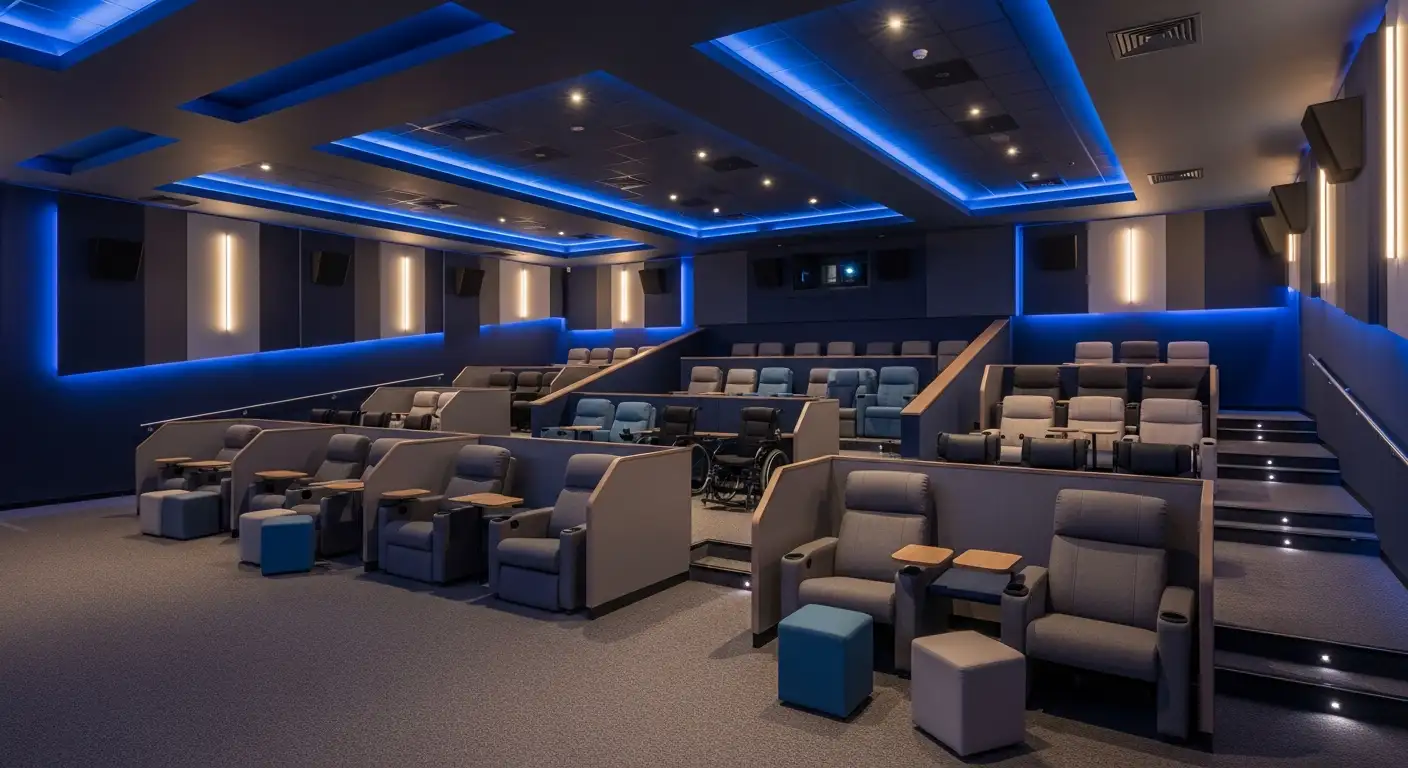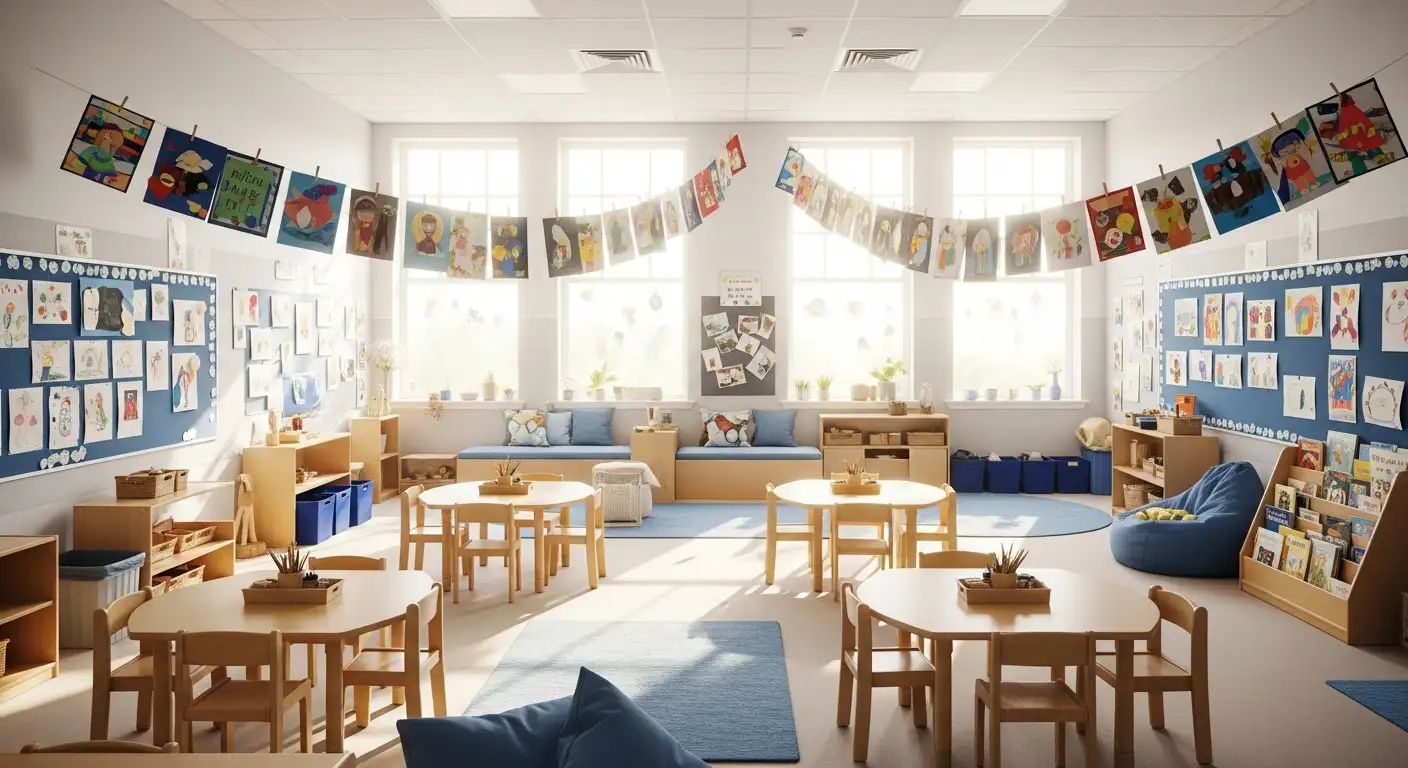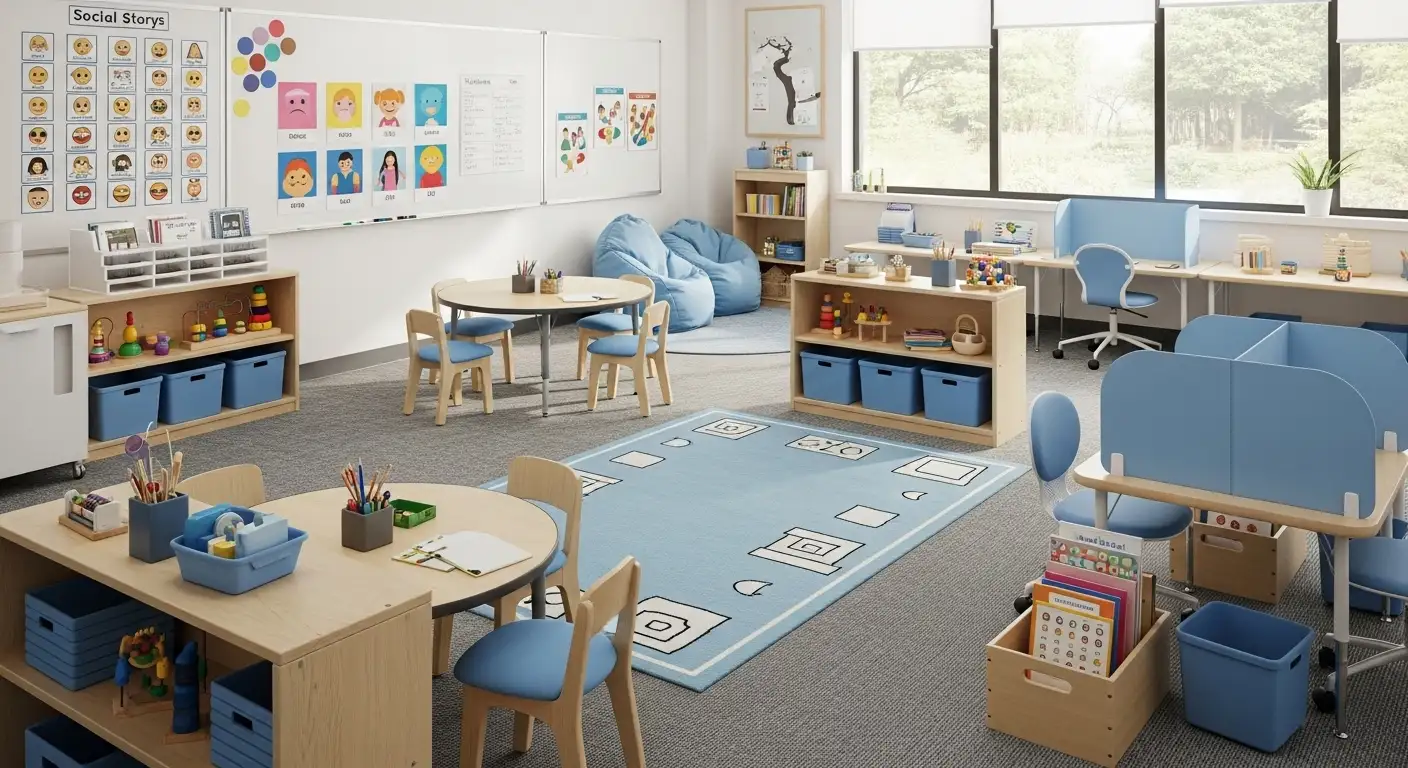How to Use Peer Modeling to Enhance Autism Learning
Harnessing Peer Modeling and ABA to Foster Social Growth in Autism

Understanding Peer Modeling and Autism Learning
Autism Spectrum Disorder (ASD) presents unique challenges in social communication and interaction. Leveraging peer modeling within a structured Applied Behavior Analysis (ABA) framework offers a powerful avenue for enhancing social skills and communication in children with ASD. This article explores how peer-mediated interventions and ABA principles intersect to create effective, evidence-backed strategies for autism learning enhancement, emphasizing early intervention, individualized planning, and collaborative therapy models.
Foundations of ABA Therapy in Autism Support
What is ABA therapy, and how is it used to support individuals with autism?
Applied Behavior Analysis (ABA) is a well-established therapeutic approach grounded in the principles of behaviorism. It is specifically designed to enhance communication, social interaction, play, and cognitive skills in children diagnosed with Autism Spectrum Disorder (ASD).
Definition and overview of ABA therapy
ABA employs a variety of structured instructional methods such as discrete-trial teaching, shaping, chaining, prompt fading, token economy systems, incidental teaching, role modeling, and errorless learning. These methods aim to teach functional communication and social skills by reinforcing positive behaviors and reducing maladaptive ones.
ABA’s goals in autism intervention
The primary goal of ABA therapy is to increase useful social and communication behaviors, including joint attention, social initiation, requesting, and narrative storytelling. By reinforcing these behaviors and encouraging their generalization across settings, ABA supports children with ASD in adapting to different environments.
Techniques and methods used in ABA
Interventions based on ABA principles, such as the Picture Exchange Communication System (PECS), help non-verbal children develop alternative communication skills. Early Intensive Behavioral Intervention (EIBI), a form of ABA, is shown to improve cognitive, linguistic, and adaptive functioning, especially when initiated early and combined with active family participation.
This evidence-based approach emphasizes individualized programming and strong therapeutic relationships to maximize outcomes. Reinforcement techniques like token economies and praise are used to motivate and maintain positive learning behaviors.
Research consistently demonstrates that ABA techniques improve both verbal and non-verbal communication skills, such as eye contact, gesture recognition, and the comprehension of social norms, making it a highly effective strategy for autism support.
Core Principles Driving ABA Therapy Effectiveness

What are the core principles behind ABA therapy?
Applied Behavior Analysis (ABA) therapy is founded on fundamental principles derived from behavioral science, focusing on increasing positive behaviors and reducing problematic ones through systematic and evidence-based methods.
Reinforcement and prompting
Reinforcement involves providing rewards to strengthen desirable behaviors. Prompts—such as verbal cues or gestures—are used to guide individuals toward desired actions, with a gradual fading of support to encourage independence.
Shaping and behavior modeling
Shaping reinforces successive approximations of a target behavior, helping individuals progress step-by-step. Modeling involves demonstrating behaviors for imitation; this technique is often used alongside peer-mediated strategies and video modeling in ASD interventions.
Generalization of skills
Generalization ensures that learned behaviors and skills transfer across various settings, people, and situations. ABA programs carefully incorporate strategies to promote this, including practicing skills in multiple contexts.
ABC model in ABA
The ABC model analyzes Antecedents (what happens before a behavior), Behaviors (the actions themselves), and Consequences (what follows the behavior) to understand and modify behaviors effectively.
Together, these principles form a structured, individualized approach to therapy. Qualified behavior analysts employ continuous data collection to tailor interventions and ensure ethical, optimal outcomes for children with Autism Spectrum Disorder.
The Human Element: Who Provides ABA Therapy?
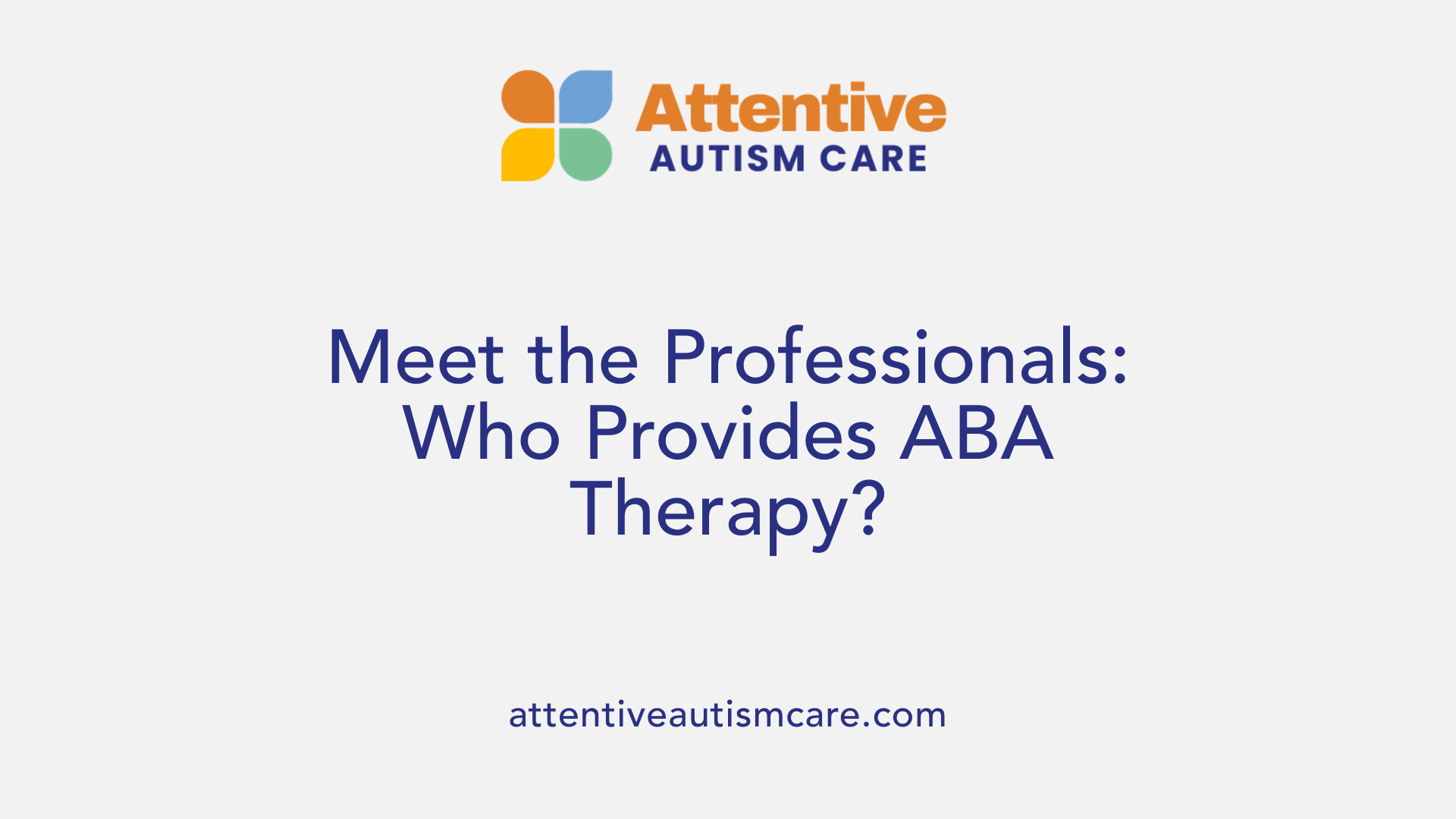
Who typically provides ABA therapy, and what qualifications do they have?
ABA therapy is delivered by professionals with specific qualifications ensuring effective treatment for children with Autism Spectrum Disorder (ASD). The most common providers are Board Certified Behavior Analysts (BCBAs), Registered Behavior Technicians (RBTs), and Board Certified Assistant Behavior Analysts (BCaBAs).
BCBAs are highly trained clinicians with graduate-level education in behavioral psychology. They have completed rigorous supervised fieldwork and passed a certification exam administered by the Behavior Analyst Certification Board (BACB). These professionals design, implement, and oversee individualized treatment plans, ensuring therapies adhere to best practices and ethical guidelines.
RBTs serve as paraprofessionals who carry out therapy sessions directly with clients. They typically hold a high school diploma, receive specialized training, and work under the close supervision of a BCBA. Their role is crucial in providing consistent, day-to-day interventions based on the established plan.
BCaBAs hold an undergraduate-level certification allowing them to implement certain aspects of treatment under a BCBA's supervision, acting as a bridge between RBTs and BCBAs.
A doctoral-level designation, BCBA-D, indicates advanced academic training but does not extend practice privileges beyond those of a BCBA.
All professionals involved maintain their credentials through ongoing education, supervision, and adherence to the ethical standards mandated by the BACB, ensuring that therapy delivery remains effective and ethically sound.
Evidence of ABA Therapy Effectiveness in ASD
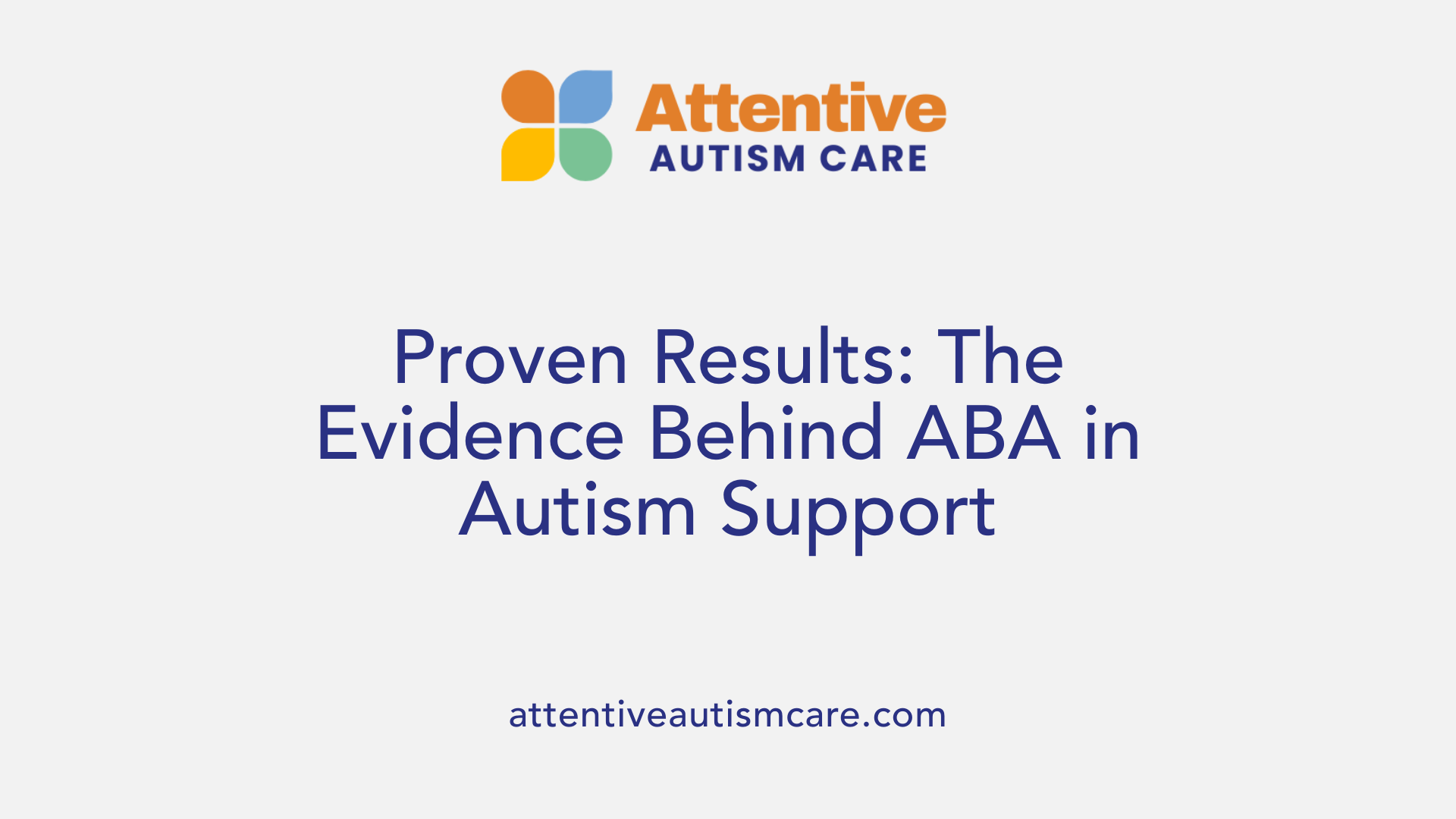
How effective is ABA therapy in treating autism spectrum disorders?
Applied Behavior Analysis (ABA) is widely recognized as a systematic, evidence-based therapeutic approach for improving communication, social interaction, play, and cognitive skills in children with Autism Spectrum Disorder (ASD). Research demonstrates that ABA can effectively teach basic communication functions such as joint attention, social initiation, and requesting through structured methods like discrete-trial teaching, shaping, chaining, and prompt fading.
Research outcomes
Landmark studies underscore ABA's substantial impact on developmental progress in children with ASD. The seminal 1987 study by Ivar Lovaas revealed that intensive ABA therapy (over 25 hours a week for two years) enabled 47% of participants to achieve average-range IQs, compared to a mere 2% in control groups. Follow-up research in 1993 confirmed these improvements persisted over time with minimal regression. Moreover, modern meta-analyses attest to the significant improvement of social skills facilitated by ABA-associated interventions such as peer-mediated and video-modeling approaches.
Long-term developmental gains
Longitudinal studies show that children receiving early and consistent ABA interventions exhibit lasting gains in cognitive, linguistic, and adaptive functioning. Key elements include reinforcement strategies like token economy systems and role modeling, which foster not only skill acquisition but also generalization across settings. These gains extend to improved pragmatics, non-verbal communication, and reduction of problematic behaviors, enhancing overall quality of life.
Importance of early, intensive intervention
Evidence clearly supports the crucial role of early intervention in maximizing ABA’s benefits. Younger children tend to respond more robustly to social skills training, though older children also gain valuable improvements. Family involvement, individualized programming, and the cultivation of strong therapeutic relationships significantly contribute to successful outcomes. The Surgeon General endorses ABA as the leading scientifically supported treatment for ASD, emphasizing early and intensive application.
| Aspect | Evidence Base | Description |
|---|---|---|
| Effectiveness | Meta-analyses, long-term studies | ABA improves communication, social skills, and cognitive functioning in ASD. |
| Key Techniques | Discrete-trial teaching, shaping | Structured teaching approaches with reinforcement and skill generalization. |
| Developmental Outcomes | Lovaas (1987), McEachin et al. (1993) | Intensive ABA linked to IQ gains and sustained progress. |
| Early Intervention Importance | Surgeon General endorsement | Early and consistent ABA leads to better developmental trajectories. |
| Family & Individualization | Educator and psychologist reports | Tailored programs and parent participation enhance therapy success. |
Typical Structure and Duration of ABA Therapy Programs
Individualized program design
ABA therapy programs are tailored specifically to each child's unique needs, strengths, and challenges. Initial assessments conducted by Board Certified Behavior Analysts (BCBAs) help determine the focus areas and intensity of intervention. This customization ensures that the therapy targets communication, social skills, and cognitive development relevant to the individual.
Session frequency and duration
Sessions are typically scheduled between 2 to 5 times weekly, with each session lasting anywhere from 3 to 7 hours. Younger children or those requiring more intensive support may receive longer and more frequent sessions, especially at the beginning of therapy.
Long-term nature of therapy
A comprehensive ABA program generally spans 3 to 5 years, although the exact duration depends on the child's progress and achievement of goals. The first 6 to 12 months usually focus on foundational skills such as communication and basic social interactions. Over time, therapy emphasizes generalization of skills to varied settings and supports greater independence.
Caregiver involvement
Active participation from caregivers is critical throughout the therapy process. Family members often receive training to reinforce learning and support skill use outside therapy sessions. This collaboration strengthens therapeutic gains and helps maintain progress long-term.
Regular monitoring and adjustments by the therapy team ensure the plan remains responsive to the child’s evolving needs. Flexibility and close teamwork between professionals and families are key to optimizing outcomes in ABA therapy.
Criticisms and Ethical Considerations of ABA Therapy
Are there any criticisms or limitations associated with ABA therapy?
Applied Behavioural Analysis (ABA) therapy, while widely endorsed and effective in skill development for children with Autism Spectrum Disorder (ASD), has faced various criticisms and ethical concerns. Some critics argue that ABA can be overly rigid and repetitive, focusing heavily on compliance rather than the child's emotional well-being or personal preferences.
Historically, certain ABA approaches incorporated aversive techniques, such as the use of punishment to reduce undesirable behaviors. These methods are now broadly condemned and deemed unethical, reflecting a critical evolution in treatment standards. The negative legacy of these past practices has contributed to skepticism and wariness among some families and advocates.
Another concern is the potential for ABA to encourage masking, which involves autistic individuals suppressing their natural behaviors to appear more neurotypical. This emphasis on conformity can lead to emotional distress or trauma, as the therapy may prioritize outward behavior modification over authentic self-expression.
Debates continue about whether this approach might undermine neurodiversity, which celebrates the natural variations in neurological development. Some argue that while structured early intervention can improve outcomes, it must be balanced with compassion and respect for individual differences.
Modern ABA practices increasingly emphasize person-centered care, highlighting the importance of tailoring interventions to each child's unique needs and fostering supportive therapeutic relationships. This shift aims to mitigate past concerns and ensure ethical, empathetic treatment for autistic individuals.
Peer-Mediated Interventions: An Overview
What is Peer-Mediated Intervention (PMI)?
Peer-mediated intervention (PMI) is an approach commonly used in inclusive early childhood education settings. It involves typically developing peers being trained to interact with children with autism spectrum disorder (ASD) to encourage social engagement and improve their social skills.
How Does PMI Support Social Skill Development in Children with ASD?
PMI facilitates social skill development by increasing opportunities for children with ASD to practice social behaviors in natural settings. Training peers using strategies such as video modeling equips them with specific skills like inviting children with ASD to play, promoting spontaneous social initiations and responses from the autistic children.
How Does PMI Increase Social Exposure with Typically Developing Peers?
Research demonstrates that PMI increases social exposure by creating meaningful interactions between children with ASD and their typically developing peers. When peers learn to engage effectively through modeled behaviors and structured prompts, children with ASD show increased independent social responses. This inclusive setting fosters social integration and helps build stronger peer relationships.
The evidence highlights PMI as a valuable tool in enhancing social performance for children with ASD, complementing other intervention methods to provide a well-rounded approach to social skill training.
Video Modeling as a Peer Training Tool
How video modeling trains typically developing peers
Video modeling is used to teach typically developing peers specific social behaviors that facilitate interactions with children with Autism Spectrum Disorder (ASD). Through this method, peers watch video demonstrations of appropriate social behaviors, such as inviting others to play or initiating conversations. This approach helps peers learn effective strategies for engaging children with ASD in a clear and structured way.
Effectiveness in encouraging social behaviors
The method proves highly effective in encouraging social behaviors among children with ASD. When peers are trained using video modeling, they become better equipped to initiate and maintain social interactions. This targeted training enhances the social environment by increasing positive peer interactions and social opportunities for children with ASD.
Study outcomes on invitation to play and social initiations
Research employing multiple probe designs has demonstrated that typically developing peers who received video modeling training successfully increased invitations to play with children with ASD. Correspondingly, children with ASD exhibited more independent responses and prompts to social initiations, indicating improved social engagement. These results highlight video modeling as a practical tool to boost peer-mediated social interaction in inclusive settings.
Research Evidence Supporting Peer-Mediated and Video Modeling Strategies

What do meta-analyses reveal about the efficacy of these interventions?
Meta-analytic research demonstrates that both peer-mediated and video-modeling interventions produce significant improvements in social performance in children with Autism Spectrum Disorder (ASD). The average effect size of 1.27 indicates a strong positive impact, suggesting these interventions are highly effective in enhancing social skills.
Are peer-mediated and video modeling equally effective?
Yes, hierarchical linear modeling analyses confirm that peer-mediated and video-modeling approaches are equally effective. Both strategies have been shown to promote social engagement and increase positive social behaviors, facilitating meaningful interactions between children with ASD and their peers.
How do these interventions impact the social performance of children with ASD?
Children with ASD who participate in peer-mediated or video-modeling interventions show enhanced social initiation, improved responses to social prompts, and greater opportunities for social exposure. These approaches encourage typically developing peers to engage with children with ASD, fostering an inclusive environment that benefits social development.
How does age affect the effectiveness of these interventions?
Intervention effectiveness tends to decrease slightly with age; younger children derive more benefit than older ones. Notably, video-modeling may be less effective for older children, highlighting the importance of early social skills training. Despite this, older children can still experience positive outcomes, emphasizing that intervention remains valuable across ages.
In summary, these research findings solidify the role of peer-mediated and video modeling strategies as powerful, evidence-based tools to enhance social skills in children with ASD, particularly when applied early in development.
Age-Related Differences in Peer Modeling Intervention Effectiveness
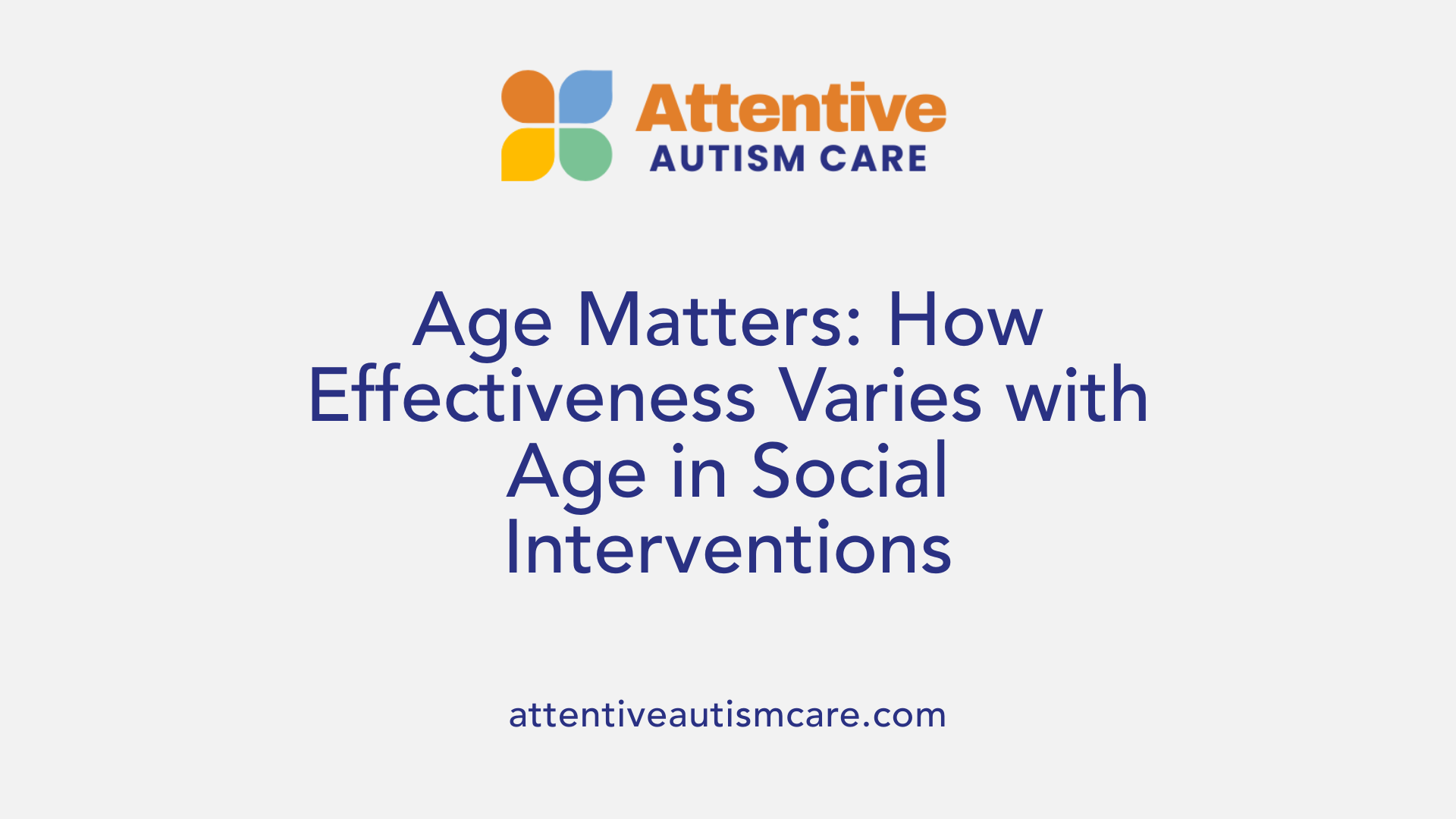
Greater benefits for younger children
Meta-analytic findings reveal that children with Autism Spectrum Disorder (ASD) experience significant improvements in social skills following peer-mediated and video-modeling interventions, with younger children benefiting more substantially. This age-related effect suggests that early intervention capitalizes on developmental plasticity, resulting in stronger gains in social performance compared to older children.
Age interaction with intervention types
Interestingly, research highlights a significant interaction between the child's age and the type of intervention applied. While both peer-mediated approaches and video-modeling generally enhance social skills, the efficacy of each method varies across age groups. Hierarchical linear modeling indicates equitable overall effectiveness; however, subtle differences emerge when age is considered.
Video modeling's reduced impact in older children
Specifically, video modeling tends to show reduced effectiveness in older children relative to peer-mediated interventions. This may stem from distinct learning preferences or reduced engagement with video-based cues in older age brackets. Consequently, video modeling, though still beneficial, may require adaptation or supplementation for optimal impact on social skills in older children with ASD.
Collectively, these findings underscore the importance of initiating social skills training as early as possible following ASD diagnosis, while also recognizing that tailored intervention strategies remain valuable across developmental stages.
Early Intervention Importance in Autism Learning
Why is early social skills training recommended for children with ASD?
Early social skills training is strongly recommended immediately following an Autism Spectrum Disorder (ASD) diagnosis to maximize intervention benefits. Research shows that children who start interventions such as peer-mediated and video-modeling approaches at a younger age experience more significant improvements in social performance. These early interventions capitalize on the brain's heightened plasticity during early childhood, making skill acquisition more effective.
How do younger children benefit more from these interventions?
Younger children consistently show larger effect sizes following social skills training, suggesting they respond better to interventions like peer-mediated approaches and video-modeling. This enhanced responsiveness may be due to their developmental stage, allowing them to absorb social cues and communication skills more readily. Early intensive behavioral interventions (EIBI), grounded in Applied Behavior Analysis (ABA), also highlight that earlier therapy initiation amplifies gains in cognitive, linguistic, and adaptive functioning.
Do older children still gain benefits from social skills interventions?
Yes, while the effect size reduces slightly with increasing age, older children with ASD still gain meaningful benefits from social skills training. Notably, interventions remain effective across age groups, although some approaches such as video-modeling may be less impactful for older children. This evidence underlines the importance of making social skills training accessible throughout childhood, ensuring developmental progress continues even if intervention starts later.
In summary, early intervention is crucial for optimal learning and social skill development in children with ASD, but exclusive benefits are not confined to younger age groups. Older children also experience positive outcomes, affirming the value of sustained and tailored therapeutic efforts throughout childhood.
Integration of ABA Methodologies with Peer Modeling
Using ABA reinforcement techniques to support peer-mediated learning
Applied Behavior Analysis (ABA) provides a structured foundation that reinforces positive social behaviors in children with Autism Spectrum Disorder (ASD). In peer-mediated interventions, ABA's reinforcement strategies like token economy systems and praise play a crucial role. These reinforcers increase engagement and motivation during interactions between children with ASD and their typically developing peers, promoting the initiation and continuation of social behavior.
Role of token economy systems and prompt fading
Token economy systems, a hallmark of ABA, reward desired social behaviors with tokens that can be exchanged for preferred items or activities. This system encourages children to repeat social initiations and responses. Additionally, prompt fading techniques reduce direct assistance gradually, helping children become more independent in interacting with peers. When peers are trained using ABA methods combined with video modeling, they learn how to invite and engage children with ASD effectively, leading to increased independent social initiations by children with ASD.
Generalization of social skills
ABA emphasizes generalization—the transfer of learned skills across different settings and people. Integrating peer-mediated interventions with ABA ensures that social skills acquired during peer interactions are maintained beyond therapy sessions. Using varied contexts, such as different play environments and peer groups, and reinforcing social behaviors consistently helps children with ASD apply those skills widely, contributing to sustained social success.
This interdisciplinary approach blending ABA reinforcement techniques with peer-mediated learning forms a comprehensive framework. It empowers children with ASD to develop functional social communication skills, leveraging both structured behavior therapy and natural peer interactions for optimal outcomes.
Technology-Enhanced Peer Modeling Using ABA Principles
Mobile Software Systems Based on ABA
Technology has become an innovative tool in supporting children with Autism Spectrum Disorder (ASD) through Applied Behavioural Analysis (ABA) techniques. Mobile software systems developed around ABA principles provide structured environments where children can learn core academic subjects such as reading and math. These systems are designed to embed behavioral teaching strategies that promote functional skills acquisition and social interaction.
Use of Token Economies and Visual Reinforcers
Integral to these software systems are token economy systems and visual and audible reinforcers. Token economies reward children automatically for exhibiting desired behaviors, which encourages learning through positive reinforcement. Visual reinforcers include animations or icons that provide immediate feedback, making learning engaging and reinforcing. Audible reinforcers such as praise or rewarding sounds further motivate children, ensuring they remain attentive and motivated throughout learning sessions.
Monitoring Progress in Academic and Social Domains
A significant advantage of technology-enhanced ABA tools is their ability to track and monitor the child's progress in real time. Data on academic achievements and social behaviors are collected systematically, allowing therapists and educators to tailor instruction based on individual progress and needs. This continuous monitoring supports the generalization of skills across varying contexts, essential for successful long-term outcomes in both academic and social domains.
By integrating ABA principles with peer modeling strategies, these mobile software systems facilitate a comprehensive learning experience for children with ASD, harnessing the power of technology to enhance social skills and educational attainment.
Communication Challenges in ASD and ABA Approaches to Address Them
What Are Common Communication Deficits in Children with ASD?
Children with Autism Spectrum Disorder (ASD) often face significant challenges in communication. These include pragmatic language deficits, where children struggle with the social use of language, making it difficult to engage in typical conversations or understand context. Non-verbal communication is also affected; children may have trouble with eye contact, recognizing gestures, or interpreting facial expressions. Verbal language challenges include echolalia (repeating phrases), neologisms (invented words), and difficulties in understanding humor or social norms.
How Does ABA Address These Communication Issues?
Applied Behavior Analysis (ABA) employs structured and evidence-based techniques specifically designed to improve communication skills in children with ASD. Central ABA methods include discrete-trial teaching, shaping, chaining, prompt fading, and role modeling. Reinforcement strategies such as token economy systems and praise are used to encourage positive behaviors. ABA emphasizes teaching functional communication such as joint attention, social initiation, requesting, and narrative skills across various settings.
What Is the Role of PECS and Other ABA-Based Communication Interventions?
The Picture Exchange Communication System (PECS), grounded in ABA principles, is widely used to teach non-verbal children with ASD alternative communication methods. PECS helps children learn to communicate needs and desires through pictures, often leading to increased communication skills and reduced problematic behaviors. Alongside PECS, ABA interventions support improvements in both verbal and non-verbal communication, such as improving gesture recognition, eye contact, and adapting language use to social contexts.
| Communication Challenge | ABA Technique | Description |
|---|---|---|
| Pragmatic Language Deficits | Role Modeling & Script Training | Teaching appropriate social language use in various situations |
| Non-verbal Communication Issues | Joint Attention & Gesture Reinforcement | Encouraging eye contact, pointing, and facial expression recognition |
| Verbal Language Difficulties | Discrete Trial Teaching & Shaping | Building vocabulary and functional speech through structured tasks |
| Non-verbal Alternatives | PECS | Using pictures to facilitate communication for non-verbal children |
ABA offers a comprehensive approach that adapts to each child's unique needs, promoting meaningful communication improvements that generalize across environments.
Role of Parents and Educators in Supporting Peer-Mediated Learning
Importance of Parent Participation
Parents play a crucial role in the success of peer-mediated interventions for children with Autism Spectrum Disorder (ASD). Active parent involvement enhances the generalization of social skills learned during therapy into everyday life. When parents participate, they can reinforce social initiations and communication strategies, ensuring consistency and promoting continued progress beyond structured sessions.
Educators’ Perspectives on Individualized Programs
Special educators and psychologists emphasize the necessity of tailoring intervention programs to each child’s unique needs. Individualized plans consider the child’s age, cognitive level, and specific social challenges. Educators view these personalized approaches as essential for maximizing benefits, especially when integrating peer-mediated methods and video modeling within inclusive classroom environments.
Building Strong Therapeutic Relationships
Building a strong therapeutic alliance among children, parents, peers, and educators is vital. Trust and collaboration foster a supportive atmosphere in which children with ASD feel motivated to engage socially. Effective communication between all parties ensures consistent implementation of strategies like peer-mediated intervention and helps address challenges promptly, supporting the child’s social development and overall learning outcomes.
Making ABA and Peer Modeling Person-Centered and Respectful
Avoiding Over-Emphasis on Compliance
Traditional approaches to Applied Behavior Analysis (ABA) often focus heavily on compliance and behavior modification. However, a person-centered perspective shifts this focus towards supporting meaningful social interaction and communication skills that respect each child's individuality. Instead of merely reducing "problem behaviors," effective ABA integrates reinforcement techniques and naturalistic teaching methods that promote autonomy and choice.
Supporting Neurodiversity
Respecting neurodiversity means acknowledging that children with Autism Spectrum Disorder (ASD) have unique ways of experiencing and interacting with the world. Interventions like peer-mediated approaches and video modeling are valuable because they encourage natural social engagement between children with ASD and their typically developing peers. These strategies support social learning without pressuring the child to conform rigidly to neurotypical norms, fostering acceptance and mutual understanding.
Emphasizing Strengths-Based Approaches
Both ABA and peer-mediated interventions benefit from focusing on the strengths of each child rather than only targeting deficits. Early and intensive behavioral therapy, including techniques such as token economies and role modeling, can be tailored to build on a child's existing communication and social skills. Doing so empowers children with ASD by validating their capabilities and encouraging them to use their strengths in functional and social contexts.
Implementing ABA and peer modeling interventions with these respectful and person-centered principles enhances their effectiveness and promotes a positive developmental environment for children with ASD.
Maximizing Autism Learning Through Collaborative Peer and ABA Strategies
Incorporating peer modeling within the well-established framework of ABA therapy presents a compelling strategy to enhance social communication and learning for children with autism spectrum disorder. Emphasizing early intervention, individualized treatment, and ethical, person-centered care ensures these approaches respect the unique needs and strengths of autistic individuals. As research continues to affirm the positive impact of peer-mediated and video-modeling interventions—particularly when integrated with ABA techniques—educators, therapists, parents, and peers form a vital community. Together, they create inclusive, effective environments where children with autism can thrive socially, academically, and emotionally, fostering meaningful development and lifelong skills.
References
- A meta-analysis in single-case research using HLM
- Scholars Journal of Arts, Humanities and Social ...
- Using Applied Behavior Analysis in Software to help Tutor ...
- Teaching Young Children to Make Bids to Play to Peers ...
- How Long Does ABA Therapy Last? | ABA for Autism
- From Minutes to Months: The Timeline of ABA Therapy
- ABA therapy progress and timelines










